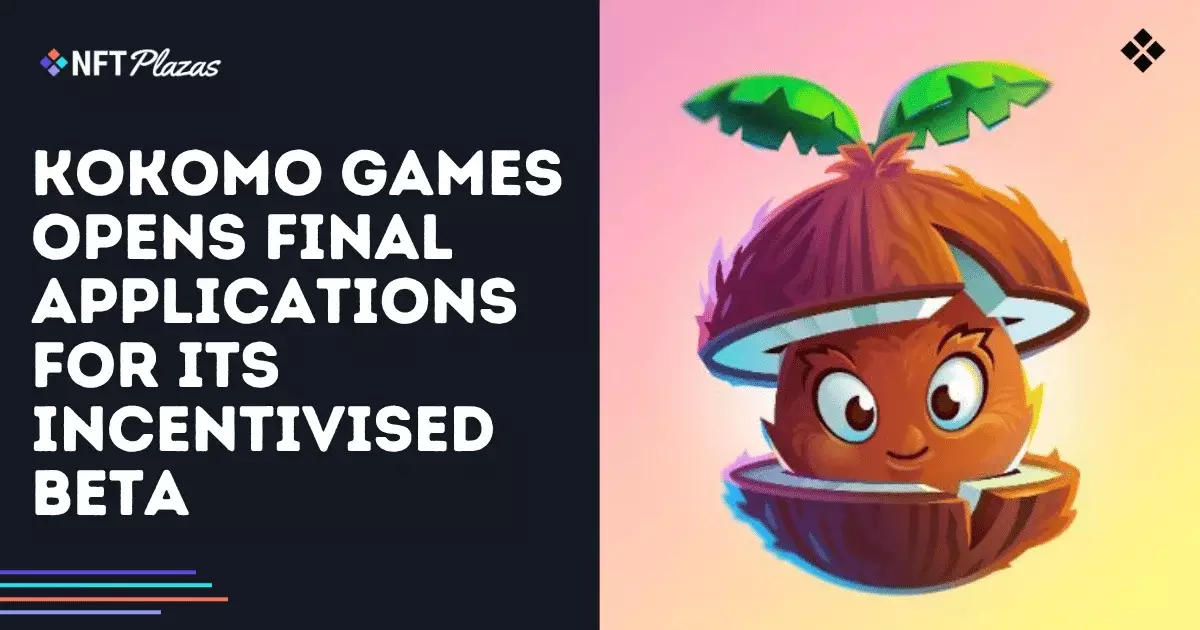In recent years, there has been a significant surge of enthusiasm surrounding blockchain-based gaming platforms. Kokomo Games, a burgeoning player within this landscape, claims its upcoming browser-based ecosystem will revolutionize casual and competitive mini-games. However, a critical analysis of their strategies, execution plans, and underlying assumptions suggests that optimism may be misplaced. While the company’s vision is ambitious, the widespread hype around NFTs and blockchain integration often masks the reality of slow adoption, user skepticism, and unresolved technical challenges. If Kokomo Games is to succeed in leading the next gaming revolution, it will need more than just attractive tokenomics and NFT utility; it requires a fundamental reevaluation of user engagement and real-world value.
Beta Testing as a Double-Edged Sword
Kokomo Games’ current focus on its incentivized beta test underscores a classic stage in game development—early access meant to generate feedback and build community. Yet, this approach often risks creating false optimism. Offering pre-funded accounts and limited reward mechanisms may entice early adopters, but it doesn’t guarantee long-term sustainability. The core issue lies in whether this early enthusiasm can translate into genuine user adoption once the game fully launches. More importantly, the fundamental challenge remains: blockchain gaming must demonstrate clear, tangible benefits for players beyond superficial rewards. If early testers are merely chasing free tokens and NFTs, it risks creating a transient user base that dissipates once incentives are withdrawn.
The Reality of NFT Utility in Gaming
Kokomo Games’ flagship NFT collection, The Kokomons, embodies the current trend of embedding utility within digital collectibles. While the promise of benefits like reduced in-game fees, stakeholding, and exclusive features sounds appealing, it raises questions about actual value creation. Many NFT projects falter because their utility is limited or unappealing outside the initial hype cycle. If NFTs are to be meaningful in Kokomo’s ecosystem, they must transcend mere status symbols, providing enduring benefits that incentivize meaningful engagement. Otherwise, they risk becoming overpriced art pieces rather than functional assets, eroding trust and diminishing the ecosystem’s credibility.
Fragmented Expectations and Sustainable Growth
A glaring concern is Kokomo’s vision of integrating token rewards, staking, and governance into a mini-game ecosystem that is still in its infancy. This regulatory and technological labyrinth can hinder project growth, particularly when the broader market remains skeptical about blockchain’s real utility in gaming. Moreover, the company’s heavy reliance on a native token, $KOKO, raises questions about liquidity, market stability, and whether players will see lasting benefits. The promise of future airdrops and pre-saled tokens may motivate early interest, but sustainability depends on sustained user base growth, which is difficult to achieve amid market volatility and the current perception of blockchain as a speculative tool rather than an entertainment platform.
Challenges in Mainstream Adoption
Despite Kokomo’s efforts to gamify the blockchain experience with casual titles like Snake, Chess, Blackjack, and Arrow Racer, mainstream adoption remains elusive. Blockchain games often face resistance from traditional gamers who view crypto elements as intrusive or nonsensical within the gaming experience. Furthermore, the technical barriers—such as understanding NFTs, wallets, and transaction fees—discourage casual users from engaging deeply. For Kokomo to gain a foothold beyond niche enthusiasts, it must deliver seamless, intuitive gameplay that integrates blockchain benefits without overwhelming players with jargon or complex mechanics. Until this happens, the ecosystem risks being a platform for crypto purists rather than a widely embraced gaming solution.
The Industry’s Fragile Foundation
From a broader perspective, Kokomo’s approach is emblematic of the wider blockchain gaming industry—struggling to prove itself beyond initial hype. While investments from high-profile figures like Steve Aoki and Mike Shinoda demonstrate confidence, it doesn’t guarantee success. The industry is plagued by unfulfilled promises, uncertain regulatory landscapes, and the challenge of creating real utility. The true test for Kokomo will be whether it can convert temporary curiosity into sustained activity that justifies its token and NFT structures. Without this, the project risks being a fleeting trend, drowned out by more pragmatic and user-centric gaming innovations.

